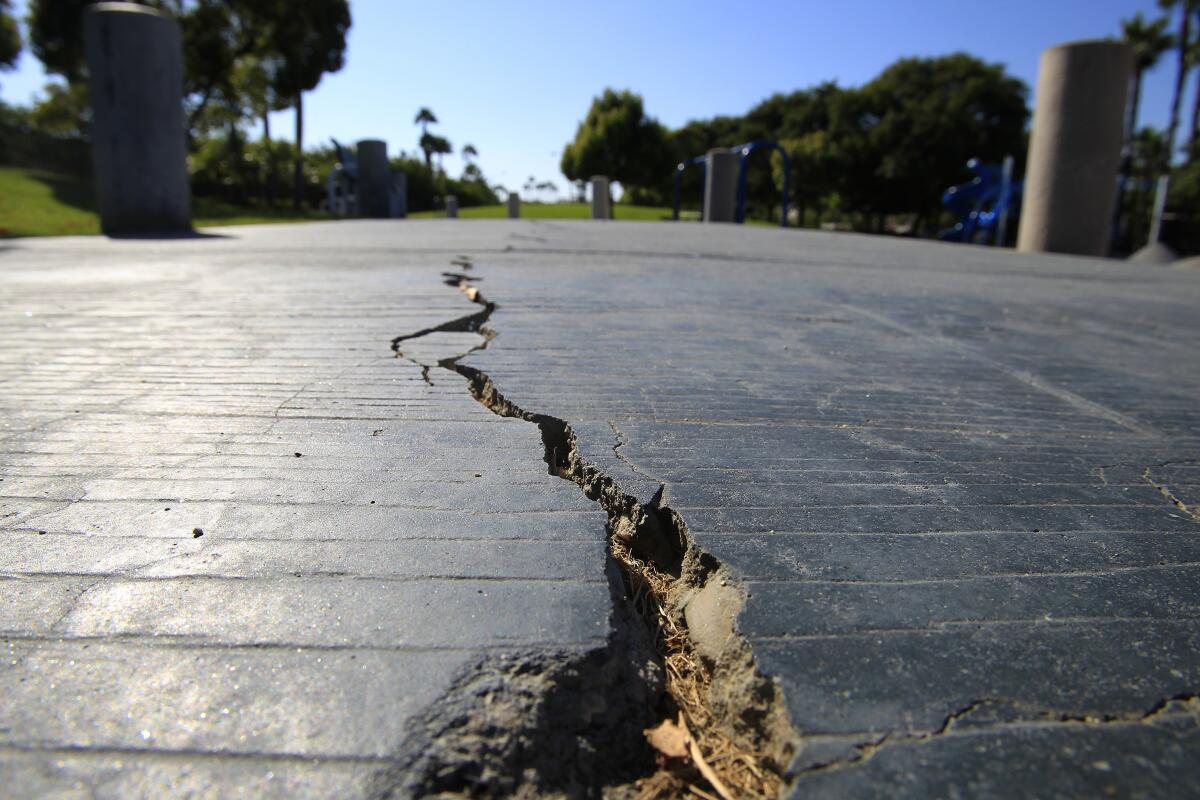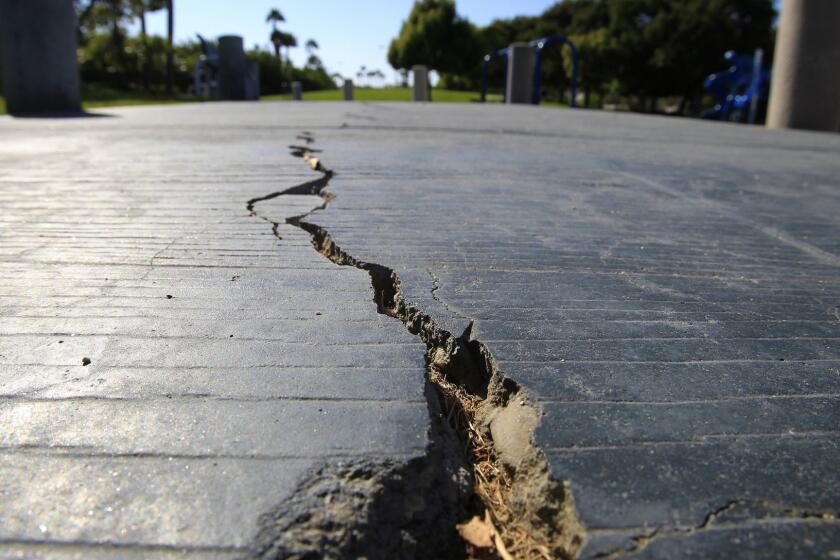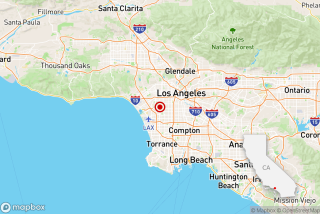More than 80 aftershocks from Monday’s L.A. earthquake, but ‘it doesn’t raise a red flag’

Any time the earth shakes in California, residents can’t help but wonder: Is this the Big One?
Monday’s swarm of earthquakes, which included a magnitude 4.0 near Inglewood, didn’t do much to quell those nerves. Experts say panic isn’t necessary, but preparation never hurts. Here’s what we know about L.A.’s latest quakes.
They came in a cluster.
The first rattles started at 4:15 a.m., when three foreshocks struck near Inglewood: a magnitude 2.1, a magnitude 2.4 and a magnitude 3.0, all within about three miles of one another, according to the U.S. Geological Survey.
The biggest quake, a magnitude 4.0, hit near Inglewood at 4:44 a.m. and was felt across Southern California. Nearby residents described strong jolts, with some reporting books and picture frames falling from shelves.
Three earthquakes centered in Inglewood shook the Los Angeles area early Monday, and by 8 a.m., about 40 quakes had been reported.
There were aftershocks.
Within 24 hours, more than 80 aftershocks had rattled the Inglewood and Lennox area, according to the USGS. Although that seems like a lot, it is not cause for alarm, said geophysicist Don Blakeman of the USGS National Earthquake Information Center in Colorado.
“It doesn’t raise a red flag,” Blakeman said. “It’s not unusual to have a swarm of quakes, and almost all of them will be small.”
The larger the earthquake is, the longer the aftershocks last, Blakeman said. The magnitude 7.1 Ridgecrest earthquake of 2019 still produces the occasional aftershock.
More than 80,000 quakes have been recorded in the Ridgecrest area since July 4 — the aftermath from two of the biggest temblors to hit California in nearly a decade..
The majority of aftershocks in the Inglewood area so far have had a magnitude less than 2.0.
“A swarm like this does not necessarily indicate something big and terrible is going to happen, but there’s always a tiny, tiny chance, since we can’t actually predict quakes,” Blakeman said. “We can’t tell you for sure what’s going to happen.”
They were deeper than usual.
The main shock was “pretty deep for California,” at about 12 miles down, said Paul Caruso, a geophysicist at the USGS National Earthquake Information Center.
Caruso said earthquakes in the L.A. area are typically about three miles deep. But 12 miles is far from the deepest; earthquakes in Fiji and elsewhere can be as deep at 300 miles.
“The deeper the earthquake is, the less strongly people feel it, because they’re potentially farther away from where the energy is released,” Caruso said.
They were probably not on a major fault.
Shortly after the shaking, earthquake expert Lucy Jones said on Twitter that the 4.0 quake was probably not on a mapped fault because it had a thrust mechanism.
Robert Graves, a research geophysicist with the USGS’s Earthquake Science Center, based in Pasadena, explained: The Newport-Inglewood fault, the closest one to Monday’s earthquake, is a strike-slip fault, which means the two sides move laterally during an earthquake. This quake had a thrusting mechanism, which occurs when one slide of a fault slides up over another.
“Based on that, even though it was in close proximity to the Newport-Inglewood fault, it looks like it’s probably on a subsidiary fault structure, or some kind of secondary fault structure,” Graves said.
One helpful way to think of it is like a crack in a car windshield.
“There might be one big, main crack, but there could be little secondary cracks here and there,” Graves said, “and that’s the kind of fault that this is likely located on.”
They might have upset your pets.
Animals can sometimes sense when shaking is about to happen. The first waves that arrive from an earthquake, the P-waves, are the fastest. The S-waves that follow are the ones that bring the shaking.
This could explain why some animals — and people — seem to sense that something is amiss moments before the rattling begins.
“Sometimes what happens, particularly with dogs, is that first P-wave is very weak but can sometimes be felt,” Blakeman said. “And then what you actually think is the earthquake is the next series of waves that arrive.”
They’re a reminder to stay prepared.
Even if you didn’t feel this small earthquake, you never know when the Big One is going to strike.
Ready yourself by following our five-step earthquake preparedness guide and building an emergency kit.
“It sounds like a broken record, but it’s true,” Graves said. “Take this as a reminder that there are active faults, and large earthquakes will occur. Be prepared.”
Sure, we all intend to have our emergency kits packed and ready to go, but how many of us really get around to making it happen?
More to Read
Start your day right
Sign up for Essential California for news, features and recommendations from the L.A. Times and beyond in your inbox six days a week.
You may occasionally receive promotional content from the Los Angeles Times.









